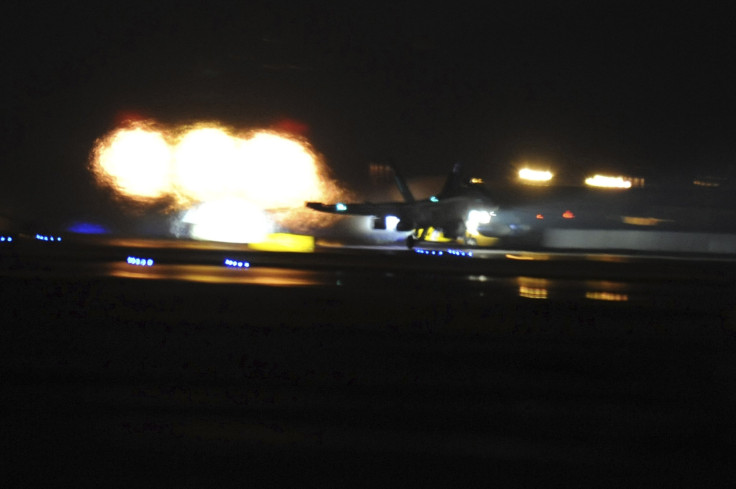Boeing (BA) Launches 100th EA-18G Growler Military Jet Under Cloud Of Uncertainty About Jobs And Military Budget Cuts

Boeing Co. (NYSE:BA) employees in St. Louis, Missouri, watched as the 100th Growler electronic warfare aircraft rolled off the production line on Monday, a milestone that was undercut somewhat by the possibility that it may be the last.
Company officials tried to cast the 100th EA-18G Growler milestone in the most positive light, and while the Navy has made clear it wants 22 more of the aircraft, the 60,000 workers who help produce the aircraft could find themselves without a job unless Congress intervenes to keep the production line open beyond its current 2016 end date. For now, military budget requirements have assigned the Naval aircraft to the purgatory of its unfunded-priorities list.
“The Navy has made it very clear that this is a high priority,” said Mike Gibbons, a vice president at Boeing. “And I think when you have that kind of support -- very clear support from Navy leadership all the way to the top, it gives you a lot of optimism that Congress will work to make it happen.”
The unfunded list is basically a wish list of things the Navy wants but under current budgets cannot have. In response to the inclusion of the Growler on that list, Boeing has launched an aggressive lobbying campaign on Capitol Hill and in the media urging lawmakers to find the $2.1 billion needed to fund the 22 aircraft and preserve the $3 billion annual program, which provides jobs in 44 states.
As Congress wades through the Pentagon’s budget looking for ways to eliminate waste -- with the added incentive that this is an election year -- lawmakers have resurrected the unfunded lists, last used in 2011, that enable the military to bypass the office of the Secretary of the Navy and go directly to Congress.
In funding terms, the lists are idiosyncratic. “It’s like telling a 4-year-old he absolutely can’t have a lollipop and then asking, 'But if you could have a lollipop, what flavor would you want?'” said Gordon Adams, a professor at American University and an expert on defense spending, in an April 29 Washington Post article.
The military sometimes uses its leverage to its advantage, he said.
“The services game the system with the expectation that there will be more money,” Adams said. “So they don’t make the hard choices. Nothing has been done to truly suppress the appetite of the services . . . It’s an undisciplined and chaotic process right now.”
Boeing has a number of cheerleaders, including U.S. Sen. Claire McCaskill, D.-Missouri., whose district depends on the Growler's production and who sits on the Committee on Armed Forces.
At a March 27 meeting of that committee, McCaskill told Admiral Greenert, chief of naval operations: “This is one of these moments where all of us -- frankly, sometimes appropriately -- are accused of parochial concerns. In reality, Admiral, what I’m asking you is that this in fact should be a national priority, not a parochial priority.”
This year’s defense budget is several billion dollars lower than it was a few years ago, when it hovered around $496 billion, making the current budget a size that is supposed to force Congress and the Pentagon to make tough choices. But the unfunded priorities list is the Pentagon's and Congress' ace in the hole to skirt budget restrictions.
Should Congress feel like giving in to temptation, its members can turn to the Overseas Contingency Operations Fund, which provided a war chest for operations in Iraq and Afghanistan that's now being used as a budget buffer after the end of the Iraq war in 2011 and for drawdown period of the Afghanistan war.
Despite the planned withdrawal of U.S. troops from Afghanistan, the war fund continues to flourish: It received $85 billion in last year’s budget for this year's spending, $6 billion more than it asked for, and about $80 billion has been earmarked for next year.
The good news for Boeing and members of Congress is that approximately $30 billion of last year’s Overseas Contingency Operations Fund was shuffled over to this year's budget, setting a precedent that could help Boeing get its priorities funded and keep the Growler's production lines open in St. Louis.
© Copyright IBTimes 2024. All rights reserved.












